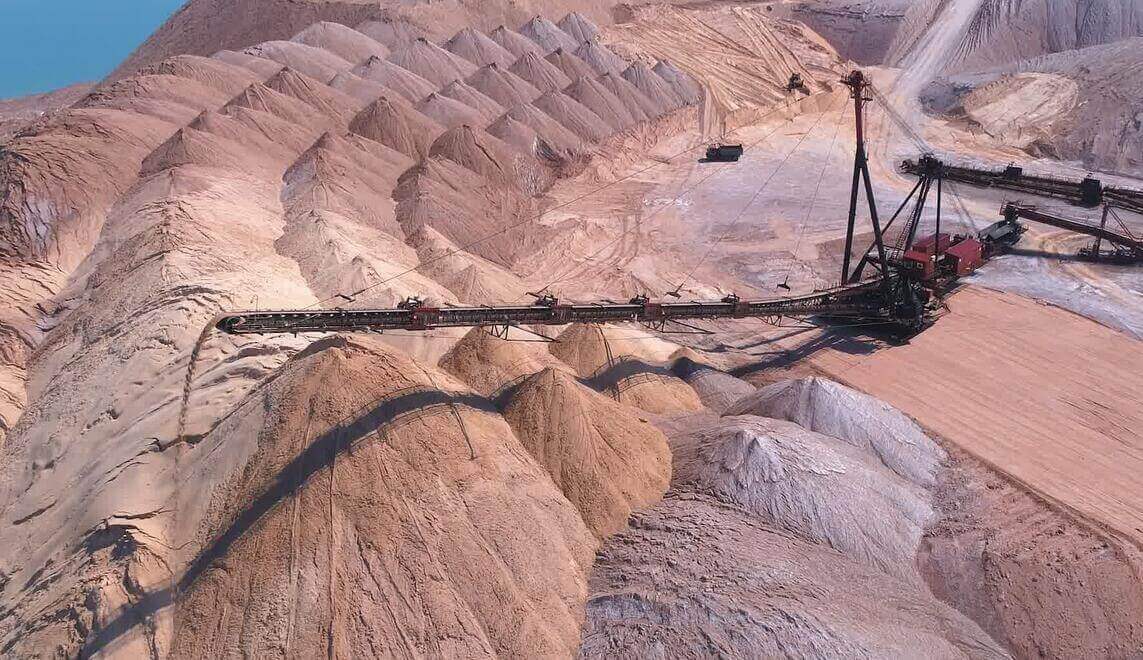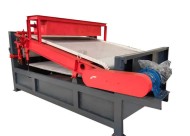Open-pit mining is a project to extract valuable minerals from mines. It mainly consists of four links: perforation, blasting, mining and loading, and transportation. The mining equipment required for these links is an important part of open-pit mining and directly affects the user’s investment rate of return. So, how do you choose open-pit mining equipment?
How to Choose Open-Pit Mining Equipment?
1. Equipment Selection Sequence
The process of selecting open pit mining equipment is generally first to select suitable shovel equipment and supporting transportation equipment, then choose perforation equipment, and then select auxiliary equipment after the leading equipment is properly matched.
2. Selection of Loading Equipment
Selection of Excavator
The selection of excavators is a complex process. Still, it is mainly based on the total amount of mining and rock physical and mechanical properties, mining technology and equipment performance, etc., to maximize the efficiency of mining production equipment, and the production equipment in each process link should adapt to each other, matching is reasonable.
Choosing an electric shovel or a hydraulic shovel excavator should be carefully considered. When the power conditions are good, the types of ores are few, and there is no need for selective mining; electric shovels should be preferred. When the bucket capacity of the excavator suitable for mining is greater than 10m³, select an electric shovel; If the bucket capacity is less than 10m³, select a hydraulic shovel.
Selection of Front-loaded Machines
When the front loader is used as auxiliary equipment for an open-pit mine, it is not only necessary to consider whether the primary technical performance, such as rated load capacity and traction force can meet the requirements of the complexity of mine production but also to consider the impact of the fragmented nature of the operation project on the loader efficiency. When we have requirements for ore blending, we set up a stockyard near the crushing station. The transportation of the prepared ore from the stockyard to the crushing station is generally completed by a front loader. The size of the front loader is selected based on the amount of ore blending and the transportation distance to choose.
3. Selection of Transportation Equipment
Transportation accounts for 40% to 60% of the total cost of open-pit mining, so selecting transportation equipment is essential.
The choice of transportation equipment for open pit mines mainly depends on the development of transportation methods. When the transportation distance of ores and rocks is short, the single-vehicle transportation scheme should be considered first; if the transportation distance of ores and rocks is long, whether to use single-vehicle transportation or joint development and transportation must be comprehensive through technical and economic comparison. The main factors affecting the choice of transportation methods are the natural geological conditions of mines, mining technical conditions, and economic factors.
When transporting by car, it is necessary to consider the matching problem with the excavator. It is generally believed that 2 to 4 buckets are used when the transportation distance is 1km, 3 to 5 buckets are used when the transportation distance is 2km, and 3 to 5 buckets are used when the transportation distance is 3km to 5km. The matching scheme of 4 buckets to 6 buckets full of trucks is more appropriate.
4. Selection of Drilling Rig
Drilling rigs are a piece of equipment that is easily overlooked because perforation costs account for a small proportion of production costs. However, drilling rigs are also open-pit mining equipment that is easy to automate.
Roller cone drilling rigs are suitable for drilling operations in ore rocks of various hardnesses. When designing drilling equipment for large and medium-sized mines, you must consider selecting a roller cone drill rig.
For small and medium-sized mines with medium-hard ore rock and requirements such as drilling holes for cracks in the slope, anchor holes, water drainage holes, etc., it is more suitable to use a down-the-hole drilling rig.
5. Selection of Auxiliary Equipment
The selection of auxiliary equipment depends on the leading production equipment. When the main equipment becomes larger, the specifications of the auxiliary equipment should also be improved accordingly.
Crawler bulldozers support shoveling and transporting equipment through leveling and blasting piles, clearing topsoil, road construction, etc., and occasionally modifying slopes. For hard rock mines, the bulldozer’s usage time is 20% to 30% of the excavator’s usage time. In the design process, this principle is followed, and the selection is made based on the specifications of the selected excavator and dump truck. Generally, when the load capacity of a dump truck exceeds 100t, a crawler bulldozer with a power greater than 380kW is selected.
The grade choice is based on the length of the transportation road and the traffic density. We should consider choosing a grader with a higher power for mines with long transportation roads and high traffic density. Generally, large mines should consider graders with a power greater than 198kW.
The main reasons wheel dozers are used as auxiliary equipment are their high maneuverability and ability to replace the functions of track dozers and graders. It can be selected according to the power of the crawler, bulldozer, and grader. Its power should be greater than the power of the selected grader but less than that of the chosen crawler bulldozer.
The equipment development of open-pit mines is steadily developing towards large-scale, automated, intelligent, and information-based mining equipment. Reasonable selection of mining equipment and mining costs will strive for greater benefits.
Factors Affecting The Selection of Surface Coal Mine Equipment
For any specific open-pit coal mine, there are many types, specifications, and types of equipment to choose from. How to reasonably select equipment to make it the lowest production cost, durable, strong adaptability, good technical performance, high production efficiency, etc., in the life cycle of the mine is a highly complex issue, and many factors need to be considered.
(1) Resource conditions. Including the occurrence of coal seams, coal seam structure, overlying rock and soil layers thickness, composition and physical and chemical properties of exfoliated materials, etc.
(2) Topography, transportation conditions, climate conditions, and climate historical data of the mining area, energy supply conditions, regional human environment, production and construction materials supply, and other conditions.
(3) Coal mine output and the possible range of changes, changes in stripping ratio, etc. It is required that the selected equipment be adapted to the scale of the mine, and at the same time, make the maximum use of equipment in each stage of coal mine production, and at the same time, ensure that the coal mine equipment capacity has a certain room for adjustment.
(4) Technical and economic factors. In order to select the best technical equipment for production, the general principles are technologically advanced, production-applicable, and economically reasonable. In addition, when carrying out specific work on equipment selection, the specific conditions of the equipment must be considered, including:
① Good performance. It means that the equipment has advanced precision and technical performance, high production efficiency, and can meet the requirements of production and management;
②Good reliability. It means that during the use of the equipment, it has good performance, accuracy, and safety, ensuring the stability and reliability of the equipment during operation;
③Good maintainability. It refers to the reasonable structure of the equipment, standardized and universal parts and components, strong interchangeability, easy maintenance and inspection, low energy consumption, and low maintenance costs;
④Good economy. It refers to low operating and management costs during the equipment life cycle, good work adaptability, and optimal overall operating efficiency;
⑤Environmental protection, occupational health, and safety;
⑥Technical policy and promotion of industry progress.
After mining, mineral processing is required to extract valuable minerals. JXSC Machine is a professional mineral processing plant designer and mining equipment manufacturer, Don’t hesitate to contact us.
LATEST PRODUCTS
Tubular Screw Conveyor
【Capacity】6-50 m3/h【Procesible Material】 …
Heavy Plate Feeder
Capacity: 100-240 m3/h Power: 15-45 kW Speed: 0…
Plate Magnetic Separator
【Capacity】8-35 t/h 【Power】1.5-3 kW 【Applic…










